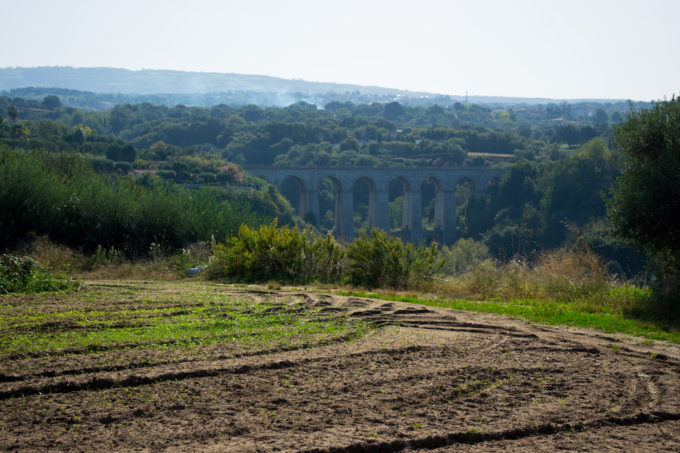
‘Nduja is a spicy spreadable salami from the area around Monte Poro, the area just inland from the Capo Vaticano between Nicotera and Tropea. While its origin is unknown, some believe that ‘nduja is derived from andouille (the French sausage made from tripe) and was introduced by the Spanish when they ruled southern Italy. Before you stop reading here, while this mixture may not sound tantalising, few have not succumbed to its seductive qualities.
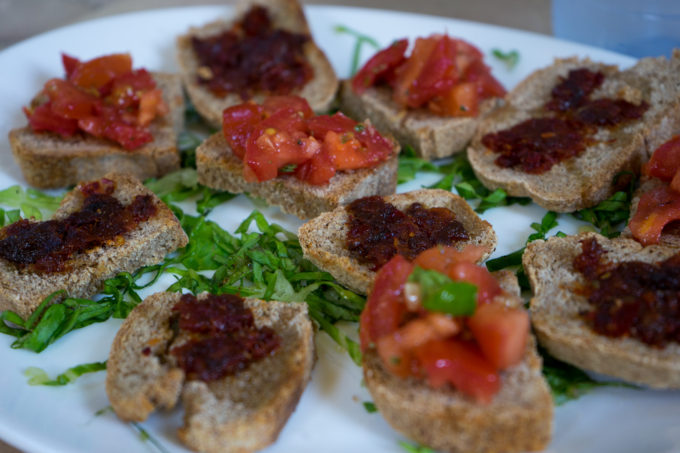
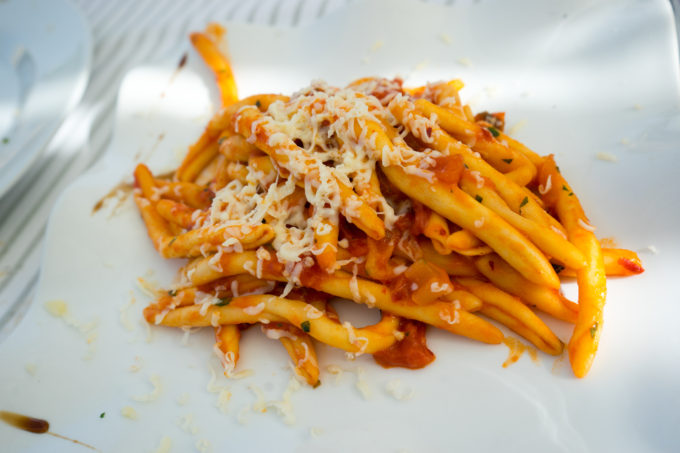
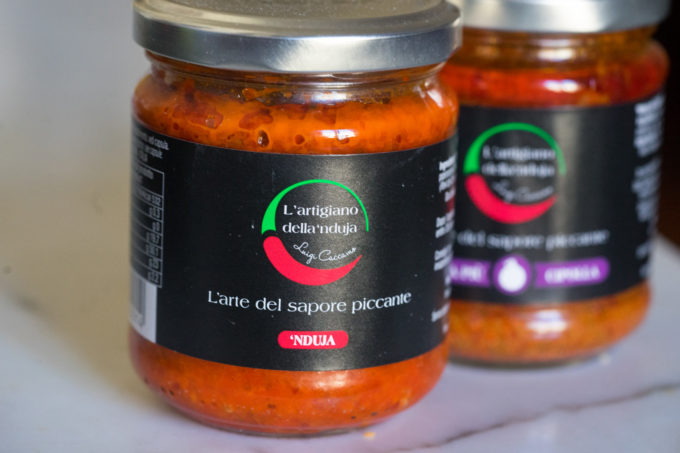
‘Nduja is traditionally made from pork meat (inferior cuts like the head (testa), belly (sottopancia) and trimmings from the shoulder (spalla) and thigh (coscia)) and fresh fat from pigs older than 13 months. (If you fear fat, fear not, read new research here.) More artisan versions will use instead prime cuts like the cheek (guanciale) and finer cuts from the belly (pancetta). This is finely ground (traditionally with a knife by only women) with a bit of salt and lots of sweet and spicy chillies (about 250 to 330 grams for every kilo of meat). The chillies are a natural antiseptic and antioxidant so there is no need for artificial preservatives. The mixture is left to mingle for a few hours before being stuffed into a natural casing or jarred. It is sometimes smoked and then is left to mature typically for a month but can be left for up to a year. It is served spread on grilled or toasted bead, to flavour vegetables, in sandwiches, in arancini, on pizzas or with a little olive oil, is used to dress pasta (particularly the local fileja pasta). I had been melting ‘nduja into tomato sauce for some time now and using it on pasta or to poach eggs in so was well acquainted with its tantalising flavour and addictive qualities.
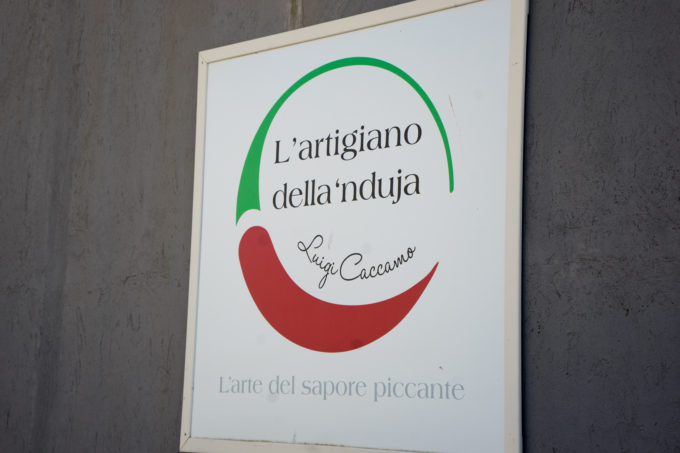
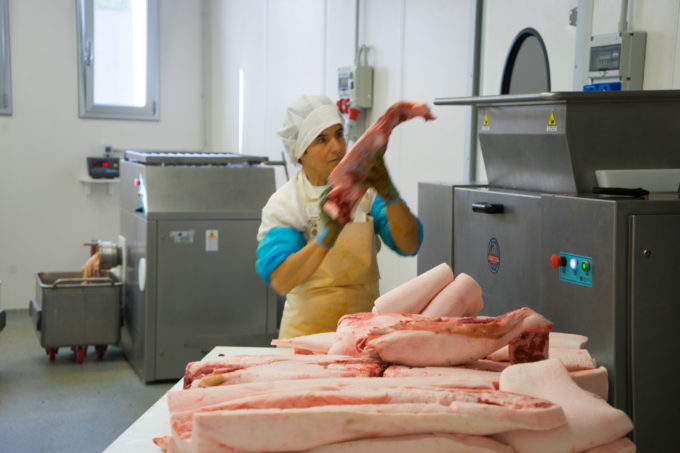
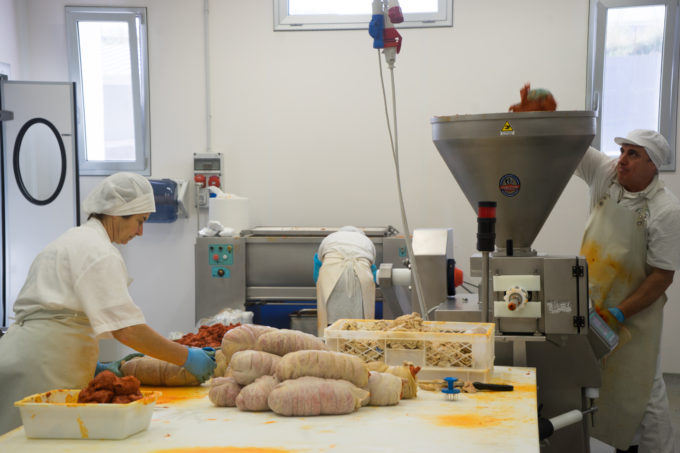
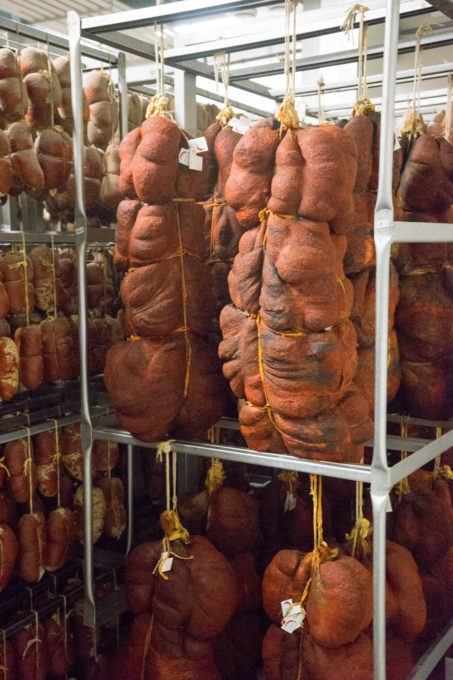
The village renowned for the best ‘nduja is Spilinga which has a festival the second week of August dedicated to the ‘nduja which boasts a DOC (a quality and origin guarantee from the Italian government). I made a visit to Spilinga to find L’artigiano della ‘nduja owned by the friendly Luigi Caccamo, known as the best ‘nduja producer. Finding the factory was relatively easy as it is quite a large and modern facility in the relatively tiny town of Spilinga. It had not always been such a grandiose establishment and only started in 2002 when Caccamo started selling some of his homemade ‘nduja. By 2004, he was producing more ‘nduja out of his father’s house and only in 2014 did he build the modern factory I visited. What struck me was how pristinely clean everything was and his distinct focus on hygiene. The tour started where the meat and fat were ground. Only prime cuts of pancetta and guanciale are used and ground with fresh, snow-white back fat. They were ground separately and then mixed together before being manually stuffed into casings, pricked to release any moisture, tied and hung. His ‘nduja is aged for 90 to 100 days, three times longer than most ‘nduja.
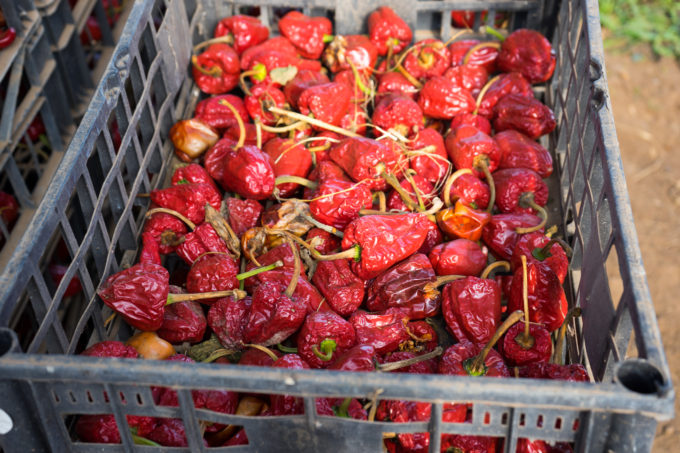
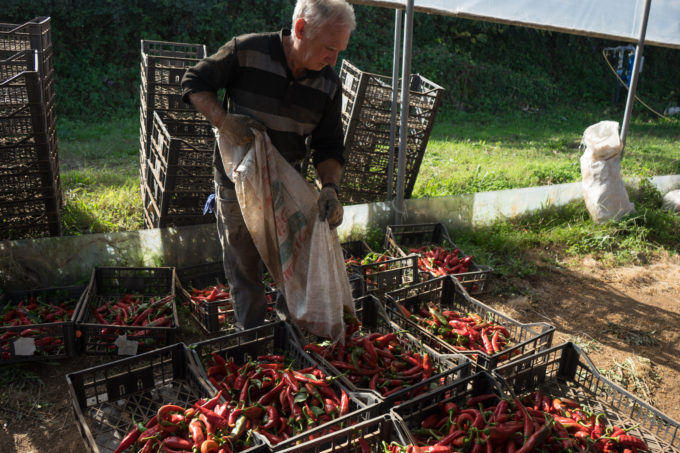
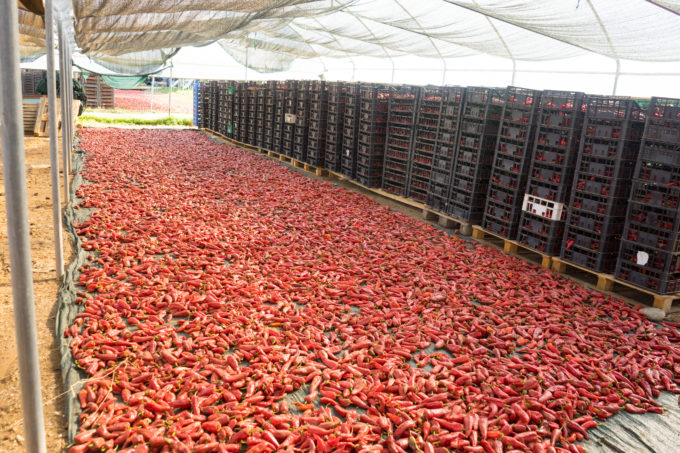
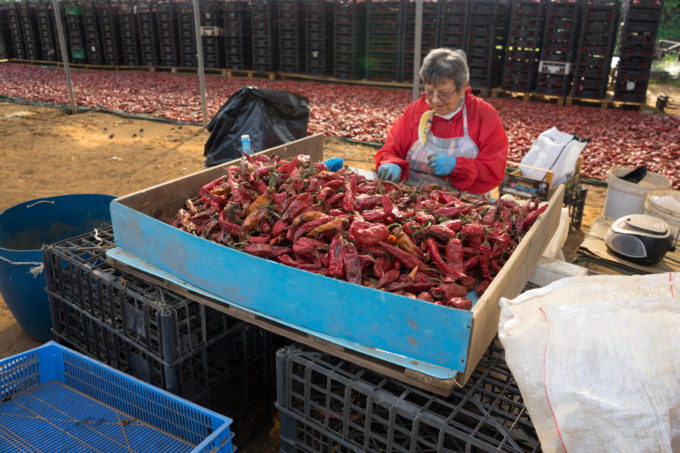
We visited where the chillies (both sweet and spicy) were being dried. Caccamo grows his own chillies and then had stems them, washes, dries, sorts them and grinds them. The longer chilies are sweet and the round ones are spicy. When sorting, they are looking for chillies with less water as he said this creates more acid and affects the flavour. While the ingredients and the method sound simple, the flavour of the ‘nduja is intense and even a bit adds a huge amount of character to a dish. My seven year old son who normally shies away from spicy food, was hoovering up ‘nduja spread on toast.
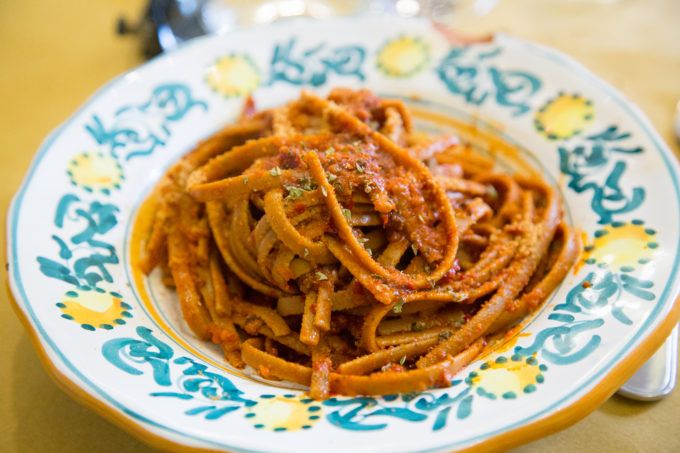
I often make a simple and quick lunch of dinner for the family by poaching eggs in tomato sauce and serving it with grilled bread and a sprinkling of grated pecorino cheese. For the adults, I frequently melt a spoonful of ‘nduja into the sauce to make something extra special. The best part is that this can be made with ingredients you keep in the fridge or larder and can be prepared in less than 20 minutes. Now knowing who and how my ‘nduja is made, makes me feel confident on what I am feeding my family.
Uova ca ‘nduja (eggs with ‘nduja salami) – Calabria
Eggs can also be more simply prepared scrambled with ‘nduja. The addition of tomatoes to the dish, makes it more of a one-dish meal. This is very similar to uova in purgatorio (meaning “eggs in purgatory”), a dish of neapolitan origin which does not have ‘nduja. For illustrated step-by-step instructions, click here.
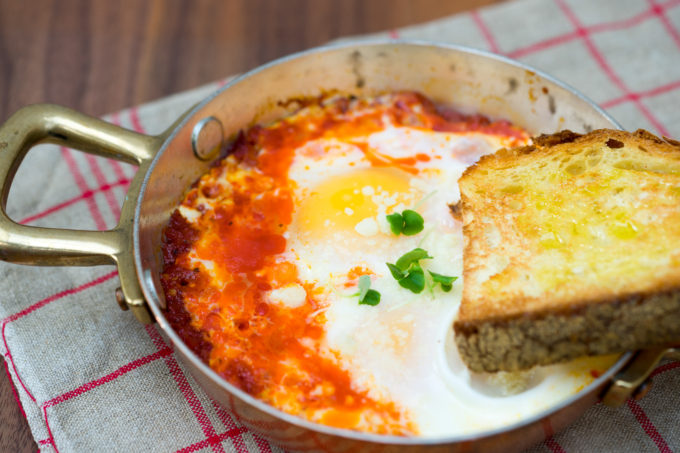
20 mls extra-virgin olive oil
1 garlic clove, skin removed and bashed a bit
1/2 onion, skin and ends removed and finely chopped
50 grams ‘nduja
1 sprig basil, rinsed and dried
550 grams tomato passata
4 eggs
10 grams pecorino cheese, finely grated (optional)
2 slices bruschetta
Sea salt
Black pepper, freshly ground
In a frying pan, heat the olive oil, garlic and onion and cook until the garlic has browned. Discard the garlic. Add the ‘nduja. When the ‘nduja has melted, add the tomato passata, basil and salt and pepper to taste. Stir and cook for 10 minutes. Break the eggs into the tomato sauce and cover with a lid. Cook for 3 minutes. Serve immediately with the pecorino sprinkled over top and with bruschetta on the side.
To visit:
L’artigiano della ‘nduja
SP22, 89864 Spilinga VV
Tel: +39 0963 65470
Book in advance. For larger groups, they sometimes serve lunch.


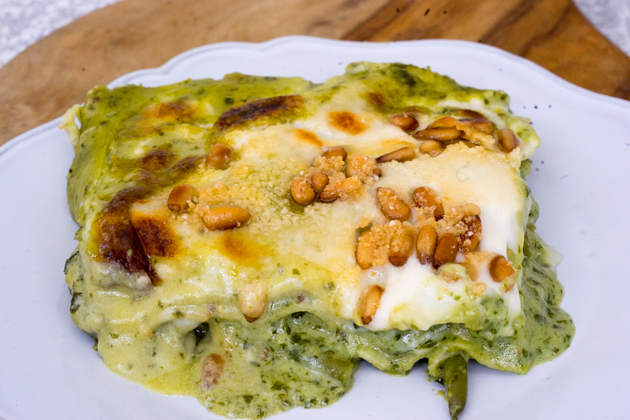
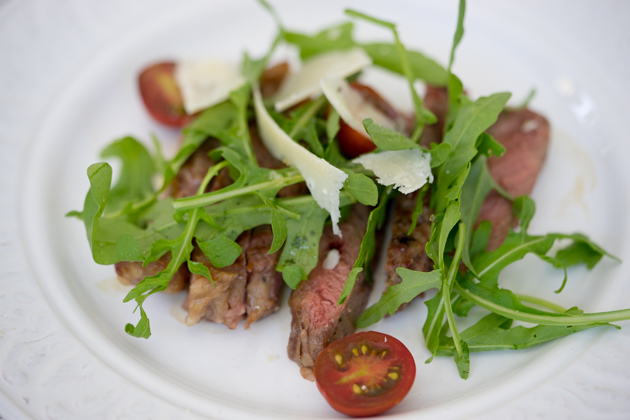
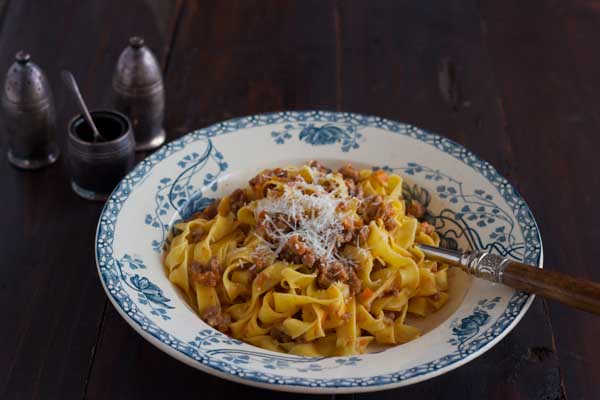
Fileja pasta with Tropea onions, ‘nduja and pecorino cheese is already a favorite of mine but I will be trying Uova ca ‘nduja recipe. I have one jar of nduja and one package of fileja pasta left from my last trip!
Hi Frank, It is definitely delicious and one of my favourite go-to’s when I need a meal quick. Thanks for inspiring me to go to Tropea. It is a very special place.